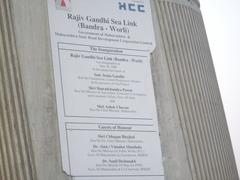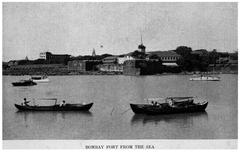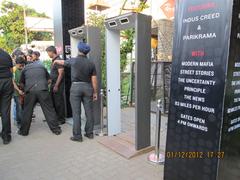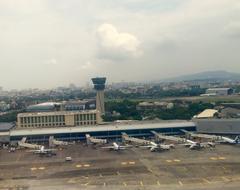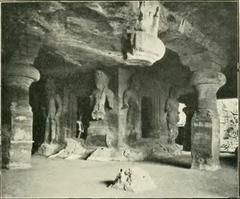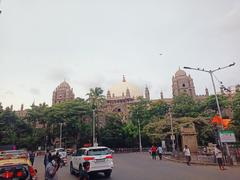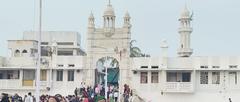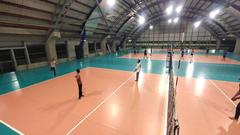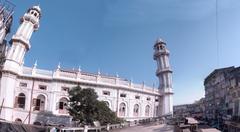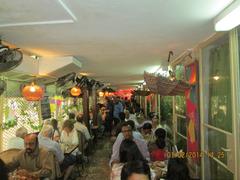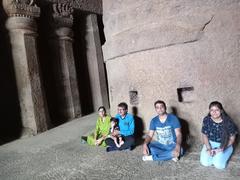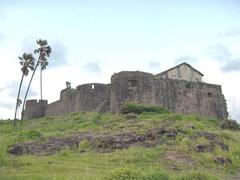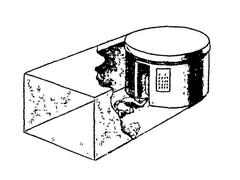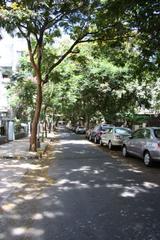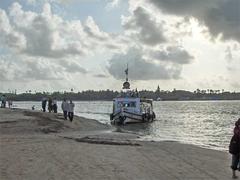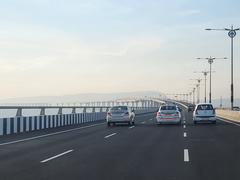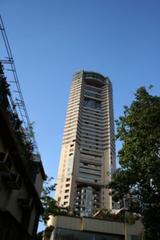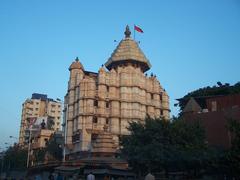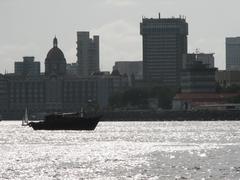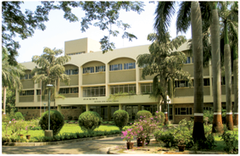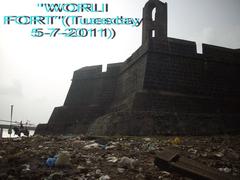India Tower Palais Royale Mumbai: Visiting Hours, Tickets, and Historical Sites Guide
Date: 14/06/2025
Introduction
Mumbai, India’s thriving financial and cultural capital, has always been a focal point for ambitious urban projects and architectural innovation. Among its most audacious visions was the India Tower—also known as Palais Royale Mumbai or Mumbai Tower. Envisioned to soar over 700 meters, this project was set to be one of the world’s tallest skyscrapers, symbolizing India’s modern identity and economic growth. Designed by renowned international firms, the India Tower promised sustainable engineering and state-of-the-art design. However, financial disputes and regulatory barriers led to the project’s cancellation, leaving the tower unbuilt but its legacy still resonant in Mumbai’s architectural narrative.
Though the India Tower remains inaccessible, the surrounding Charni Road area and nearby landmarks such as the Gateway of India, Rajabai Clock Tower, Marine Drive, and Chhatrapati Shivaji Maharaj Terminus offer a vibrant journey into Mumbai’s rich heritage and evolving skyline. This guide presents the history and vision of the India Tower, explores nearby attractions, and provides practical tips for travelers eager to experience Mumbai’s architectural wonders.
Sources: The Rise and Fall of India Tower, OMA India Tower Project, Skyscraper Center India Tower, Mumbai City Government Heritage.
Table of Contents
- India Tower Mumbai: History and Vision
- Architectural Design and Engineering
- Integration with Mumbai’s Urban Landscape
- Visitor Information
- Practical Visitor Guidance
- Mumbai’s Sustainable Urban Development
- Frequently Asked Questions (FAQ)
- Visuals and Media Suggestions
- Conclusion
- References and Further Reading
India Tower Mumbai: History and Vision
Vision and Conception
Initially proposed as the “Park Hyatt Tower” in 2008 by the Dynamix Balwas Realtor Group, the India Tower began as an 85-story skyscraper at 301.1 meters. By 2010, the project’s ambition grew to a staggering 708 meters with 126 floors, which would have made it the world’s second-tallest building after Dubai’s Burj Khalifa. The design, crafted by Foster + Partners and engineered by WSP Cantor Seinuk, sought to blend Mumbai’s heritage with cutting-edge sustainability (Commercial Noida, Skyscraper Center, OMA).
Symbolism and Aspirations
India Tower was more than a supertall structure; it was conceived as a new symbol for Mumbai and India, representing a break from colonial architectural influences and the embrace of a cosmopolitan, future-oriented identity. The tower’s mixed-use design—combining luxury hotels, residences, offices, and retail—was intended to attract tourism, investment, and global attention (OMA, Skyscraper Center).
Project Cancellation
Despite initial approvals and excitement, construction stalled due to financial disputes and regulatory complexities. Work was halted in 2011, and the project was officially cancelled in October 2015, highlighting the challenges of executing mega-projects in Mumbai’s dense urban environment (Commercial Noida).
Architectural Design and Engineering
Visionary Design Elements
India Tower’s design drew inspiration from Mumbai’s rich architectural diversity, from Victorian Gothic to Art Deco. The twisting, segmented profile was designed for optimal views and to reflect the city’s spirit of reinvention (The Design Gesture).
Structural Innovations
At over 700 meters, the tower required advanced engineering—hybrid high-strength concrete cores, steel mega-frames, tuned mass dampers, and deep pile foundations to manage wind forces and Mumbai’s coastal geotechnical challenges (Crazy Engineers).
Sustainability Strategies
The design included a double-skin façade to reduce heat gain, water recycling, rainwater harvesting, energy-efficient systems, and the use of local materials to reduce the project’s carbon footprint (The Design Gesture). These strategies set a benchmark for future high-rise developments in Mumbai.
Integration with Mumbai’s Urban Landscape
India Tower was strategically planned for Charni Road, connecting with Mumbai’s historic commercial hubs and integrating with suburban trains and arterial roads. The podium’s retail, dining, and public spaces aimed to enliven the street, continuing Mumbai’s tradition of blending monumental architecture with urban vitality (Indiatimes).
Visitor Information
Can You Visit India Tower?
India Tower remains unbuilt and is not accessible to the public. There are no visiting hours or tickets for the site. However, travelers can experience Mumbai’s architectural heritage through nearby attractions and panoramic skyline views.
Nearby Attractions
- Gateway of India: Iconic 1924 monument with views of the Arabian Sea (Mumbai City Government).
- Rajabai Clock Tower: 19th-century Venetian-Gothic landmark.
- Marine Drive: Scenic promenade offering cityscape views.
- Chhatrapati Shivaji Maharaj Terminus: UNESCO-listed Victorian Gothic railway station.
Travel Tips for Charni Road
- Charni Road is easily accessible via Mumbai’s suburban railway, with local markets, eateries, and cultural venues nearby.
- Use official guides or apps like Audiala for curated tours of heritage sites.
Practical Visitor Guidance
Location & Accessibility
India Tower’s site is near Marine Lines in South Mumbai. The closest local train stations are Marine Lines and Churchgate. Taxis, auto-rickshaws, and ride apps like Uber and Ola are widely available. The Chhatrapati Shivaji Maharaj International Airport is about 25 kilometers away (Travanya, Nomadic Matt).
Viewing Points
- Marine Drive: Best for sunset skyline photos.
- Oval Maidan: Offers unobstructed cityscape views.
- Rajabai Clock Tower vicinity: Ideal for architectural photography.
Be mindful of photography restrictions near construction sites (Travel.gc.ca).
Safety and Security
Mumbai is generally safe, but visitors should remain vigilant, avoid isolated areas after dark, and secure valuables. Construction sites are off-limits and closely monitored (Travel.State.Gov).
Local Customs and Etiquette
- Greet with “Namaste.”
- Remove shoes before entering homes or religious sites.
- Ask permission before photographing people or ceremonies.
- Tipping is customary (5–10% in restaurants).
Accommodation and Dining
Options range from luxury hotels like the Taj Mahal Palace to budget hostels. Mumbai’s culinary scene is diverse, from street snacks to gourmet dining, especially in Colaba and Fort (The Broke Backpacker).
Transportation
- Suburban trains are fast but crowded.
- BEST buses and the metro serve most neighborhoods.
- Taxis, auto-rickshaws, and ride apps are convenient.
- Walking is feasible in South Mumbai; watch for traffic.
Emergency Contacts
- Police: 100
- Ambulance: 102
- Tourist Helpline: 1363
- Consular Assistance: Contact your embassy (Travel.gc.ca).
Mumbai’s Sustainable Urban Development
Even as India Tower remains unbuilt, its sustainability vision influences Mumbai’s high-rise projects. Leading buildings now feature energy-efficient façades, water conservation, and green certifications. The city is also expanding public transport and green spaces to address environmental concerns (Kohinoor Square Tower).
Frequently Asked Questions (FAQ)
Q: What happened to India Tower?
A: The project was cancelled in 2015 due to financial and regulatory challenges.
Q: Can I visit India Tower?
A: The tower was never completed and is not open to visitors.
Q: What are the top nearby historical sites?
A: Gateway of India, Chhatrapati Shivaji Maharaj Terminus, Marine Drive, and Rajabai Clock Tower.
Q: Are there guided tours?
A: Yes, many operators offer tours of Mumbai’s architectural and historical sites.
Q: How can I explore Mumbai sustainably?
A: Use public transport, walk or bike, and support eco-friendly businesses.
Visuals and Media Suggestions
- Renderings of India Tower’s proposed design.
- Maps showing Charni Road and nearby landmarks.
- Photos of Gateway of India, Marine Drive, and Rajabai Clock Tower.
- Alt tags: “India Tower Mumbai history,” “Mumbai architectural landmarks,” “Charni Road skyline.”
Conclusion
India Tower remains an icon of Mumbai’s architectural ambition, even in its unbuilt form. The project’s vision and challenges highlight the complexities of urban development in one of the world’s most dynamic cities. While the tower itself cannot be visited, Mumbai’s vibrant neighborhoods, historic monuments, and modern high-rises offer a rich experience for travelers and architecture enthusiasts. Download the Audiala app for curated guides, and consult official tourism resources for up-to-date information.
References and Further Reading
- The Rise and Fall of India Tower: Mumbai’s Unbuilt Architectural Icon, Commercial Noida
- India Tower Project Overview, OMA
- India Tower Skyscraper Details, Skyscraper Center
- Mumbai City Government, Culture & Heritage
- India Tower Architectural Insights, The Design Gesture
- India Tower Structural Innovations, Crazy Engineers
- Iconic Monuments in Mumbai, Indiatimes
- Mumbai Tourism Official Site, Maharashtra Tourism
- Forgotten Places of Mumbai: Rajabai Tower, Free Press Journal
- Travanya Mumbai Attractions
- Framey Mumbai Tourist Attractions
- The Broke Backpacker Mumbai Itinerary
- Travel.gc.ca India
- Travel.State.Gov India
- Kohinoor Square Tower
